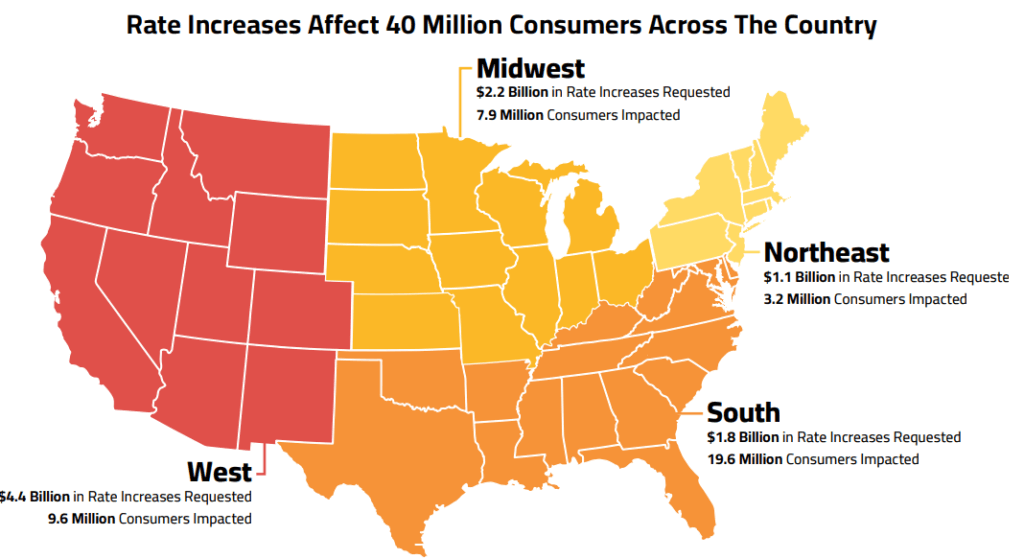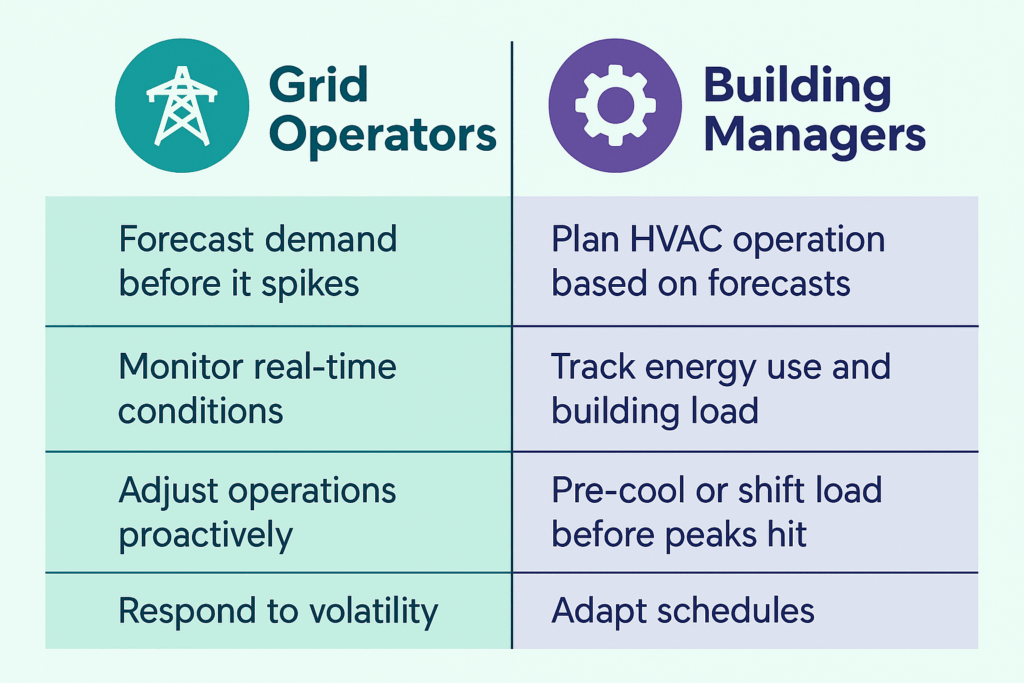
The energy landscape is evolving. According to a report from PowerLines, utility costs are rising faster than inflation.
In the first half of 2025, U.S. utility companies requested $29 billion in utility rate hikes, affecting over 40 million customers. Residential electricity costs have risen by almost 30% since 2021, and residential gas costs have increased by nearly 40% since 2019, according to the U.S. Energy Information Administration (EIA).
These aren’t short-term adjustments. They signal a lasting shift in how electricity is generated, delivered, and priced, making planning building operations around utility rate hikes essential for controlling long-term costs.
More than ever, building managers need to think like grid operators to stay ahead of rising utility costs. 3 main forces are accelerating the rate of increase across the country:
For buildings with outdated HVAC systems, the pressure is mounting. Old systems were built for a predictable grid, not one strained by extreme heat and surging demand. What was once focused on comfort must now respond to volatility.
As rates rise, failing to plan building operations around utility rate hikes only increases the cost of inaction. Every month a building operates without adjusting to today’s energy landscape, it takes on more financial risk. Peak pricing, capacity charges, and seasonal volatility can quietly add thousands to utility costs.
In regions like New York and California, a single high-demand event can define a building’s peak load for the year, triggering monthly charges long after the moment has passed. Buildings that lack real-time responsiveness or seasonal strategies, the foundation of planning building operations around utility rate hikes, have no way to defend themselves from these costs.
Yet many still operate under outdated assumptions. They treat energy as a fixed overhead, rather than a variable cost shaped by timing and behavior. That mindset worked when the grid was simpler. But today, utilities don’t just charge for how much energy you use. They charge for when and how you use it.
Staying passive in the current energy environment is no longer safe. It’s a financial decision (or lack thereof) that exposes buildings to risk they can’t see until the bill arrives. And those bills are only getting bigger.

Image credit PowerLines
Grid operators are not passive energy users. They anticipate demand, monitor real-time conditions, and adjust proactively to prevent system strain. Building managers must adopt that same proactive mindset if they want to effectively plan building operations around utility rate hikes.

The more volatility the grid experiences, the more that volatility is priced into every kilowatt-hour a building consumes.
Utilities have shifted significant responsibility downstream. Charges based on peak usage, demand intervals, and seasonal load profiles signal that buildings are expected to manage not just consumption, but impact. The rules have changed, and buildings that do not adapt will continue to pay a premium.
This shift calls for a new operating mindset. One where building teams don’t just react to bills but work to understand what’s driving them. That means identifying the building’s peak load moments, anticipating when the grid will be most stressed, and aligning HVAC operation accordingly.
A grid operator would never walk into a heatwave blind. A building shouldn’t either. Especially when planning building operations around utility rate hikes, protecting both budgets and comfort.
Parity helps multifamily buildings and hotels plan operations around utility rate hikes without relying on guesswork, spreadsheets, or reactive strategies. Our service automates demand response protocols to avoid unnecessary peak demand charges, reduce exposure to capacity charges, and smooth out volatility in energy spend, without sacrificing tenant comfort.
In late June 2025, a record-setting heatwave hit the Northeast and Mid-Atlantic, sending grid operators scrambling to maintain stability. Electricity prices in places like New York City surged above $2,400 per megawatt-hour. Parity supported our customers by automatically adjusting HVAC setpoints and load schedules in the hours leading up to the forecasted peak.
The result was twofold. First, the contributions of those buildings added up to 300kW per day, or roughly the real-time electricity demand of about 250 homes. Second, we helped those buildings avoid costs not just for the day, but for the months that followed.
Our customers were able to support local grid operators in maintaining stability during a time of need while simultaneously turning a stressful event into a source of revenue.
To learn more about how HVAC optimization can help control utility costs and improve energy strategy, email contact@paritygo.com or call 1-833-372-7489.